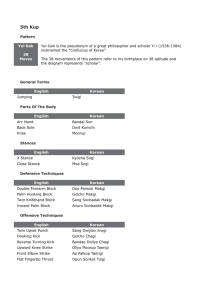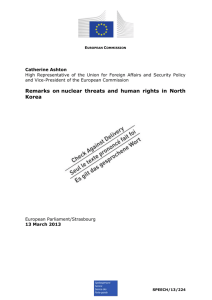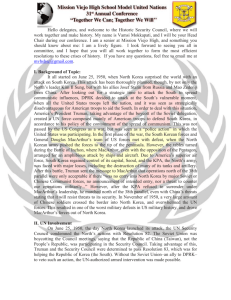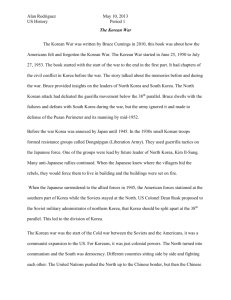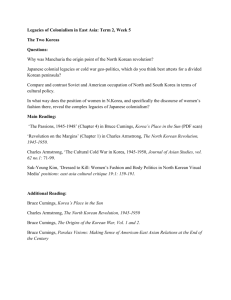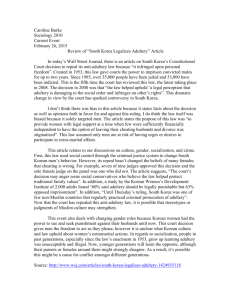Cultural Heritage Sites in North Korea
advertisement
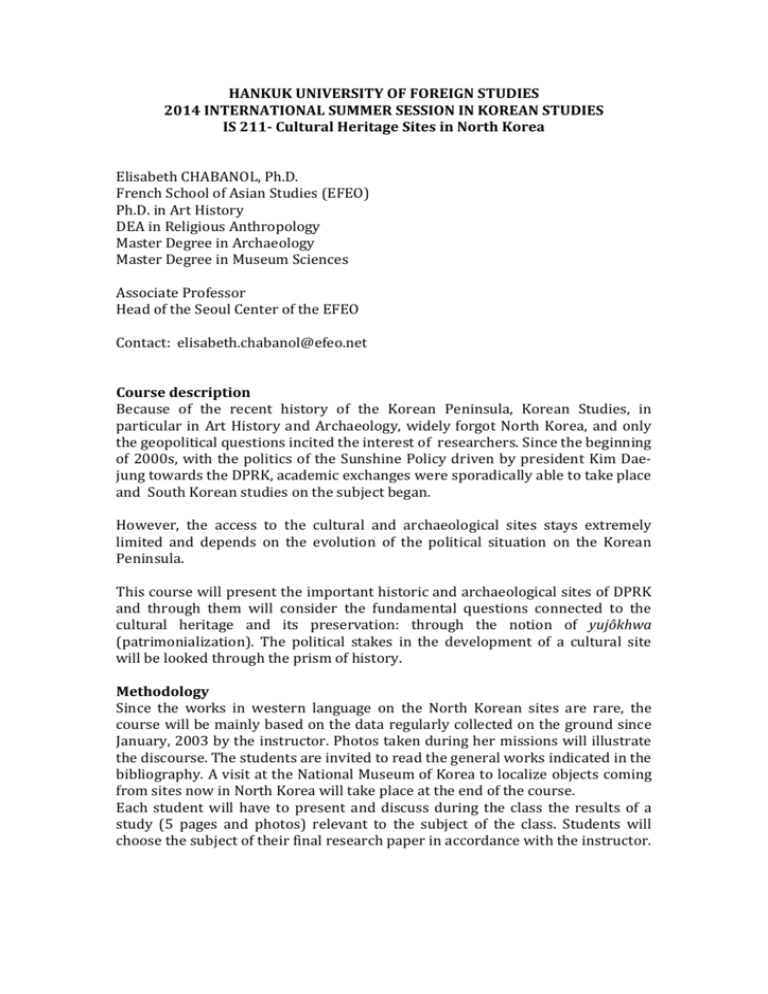
HANKUK UNIVERSITY OF FOREIGN STUDIES 2014 INTERNATIONAL SUMMER SESSION IN KOREAN STUDIES IS 211- Cultural Heritage Sites in North Korea Elisabeth CHABANOL, Ph.D. French School of Asian Studies (EFEO) Ph.D. in Art History DEA in Religious Anthropology Master Degree in Archaeology Master Degree in Museum Sciences Associate Professor Head of the Seoul Center of the EFEO Contact: elisabeth.chabanol@efeo.net Course description Because of the recent history of the Korean Peninsula, Korean Studies, in particular in Art History and Archaeology, widely forgot North Korea, and only the geopolitical questions incited the interest of researchers. Since the beginning of 2000s, with the politics of the Sunshine Policy driven by president Kim Daejung towards the DPRK, academic exchanges were sporadically able to take place and South Korean studies on the subject began. However, the access to the cultural and archaeological sites stays extremely limited and depends on the evolution of the political situation on the Korean Peninsula. This course will present the important historic and archaeological sites of DPRK and through them will consider the fundamental questions connected to the cultural heritage and its preservation: through the notion of yujôkhwa (patrimonialization). The political stakes in the development of a cultural site will be looked through the prism of history. Methodology Since the works in western language on the North Korean sites are rare, the course will be mainly based on the data regularly collected on the ground since January, 2003 by the instructor. Photos taken during her missions will illustrate the discourse. The students are invited to read the general works indicated in the bibliography. A visit at the National Museum of Korea to localize objects coming from sites now in North Korea will take place at the end of the course. Each student will have to present and discuss during the class the results of a study (5 pages and photos) relevant to the subject of the class. Students will choose the subject of their final research paper in accordance with the instructor. Assignments and Grading As the education is mainly based on visual data, attendance is required in the class and during the museum visit. The grade will be divided in: Attendance (required): fail if more than four absences 30% Participation in class 20% Exam 25% Final Project 25% Bibliography - - CHABANOL Élisabeth, « Study of the Archaeological and Historic Sites of Kaesông: Status of research into the preservation of the site », Royal Asiatic Society, Transactions, 80, 2005, pp. 35-58. HUYSSEN Andreas, Present Pasts. Urban palimpsests and the Politics of Memory, Stanford, Standford University Press, 2003. SMITH Laurajane, Uses of Heritage, London/New York, Routledge, 2006. YIM Haksoon, The Emergence and Change of Cultural Policy in South Korea, Seoul, JinHan Book, 2003. NORA Pierre, “Between Memory and History. Les Lieux de Mémoire,” The Regents of the University of California, Representations, 26, Spring 1989, pp. 7-24. Course Schedule First week General introduction on the history of the archaeological and museographic institutions of the DPRK territory from the Japanese Colonial period to today. The laws framing the cultural heritage in North Korea Second week The Koguryô tombs and their registration on the UNESCO world heritage list. Other sites proposed to the registration (Mts. Myohyang, Historical Relics in P’yôngyang, Caves in Kujang area, Mt. Chilbo) Third week Le site de Kaesông, Koryô Kingdom capital, its history and the question the Kaesông Industrial Complex Fourth week Tan’gun tomb, its discovery and its development as a touristic and political symbol The Mts. Kûmgang Mounts and its representation during History until the South Korean touristic project Fifth week Final project papers presented in class by each student




